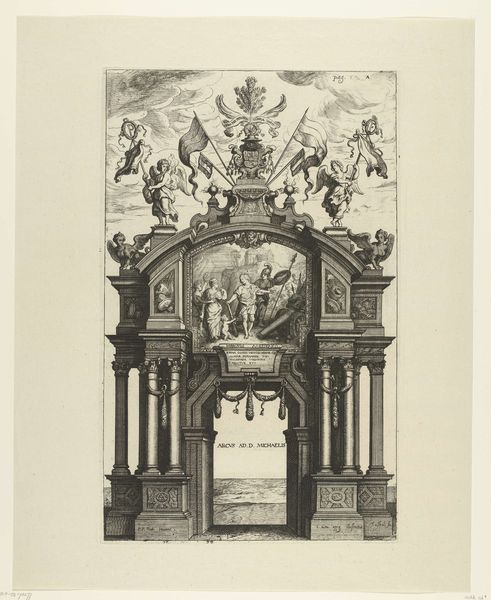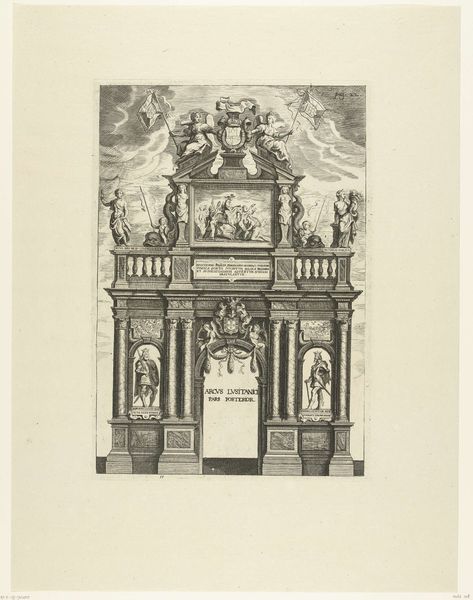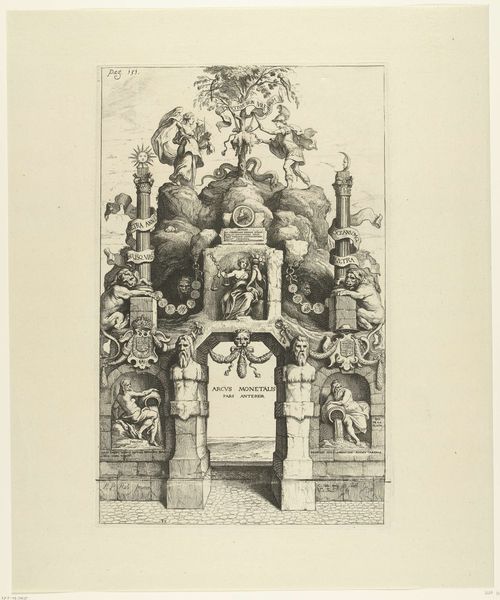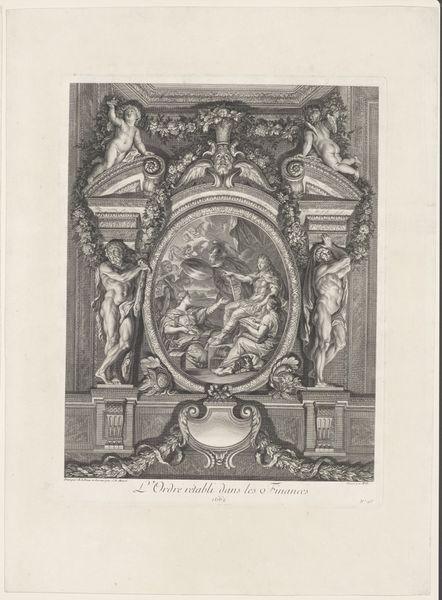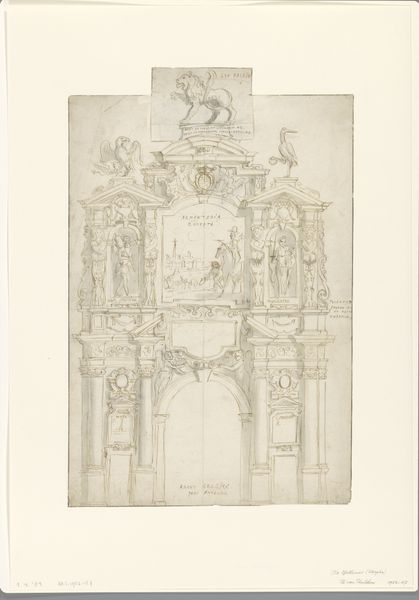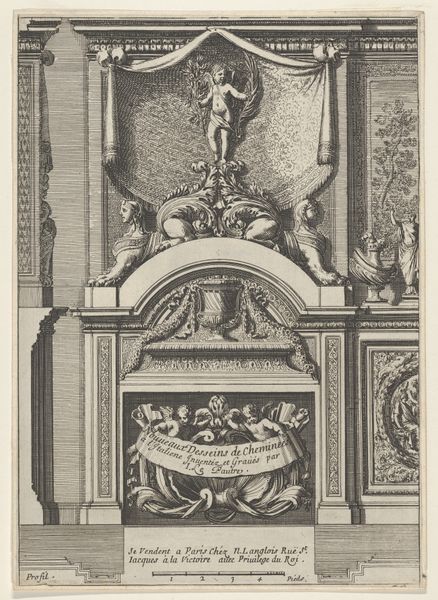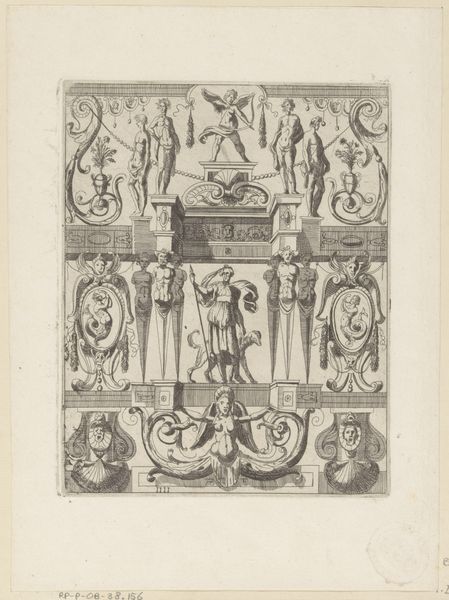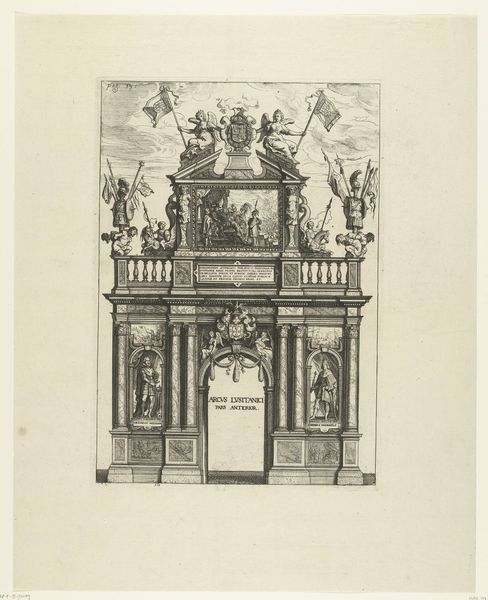
Toneel van Mercurius; intocht van Ferdinand te Antwerpen in 1635 (nr. 33) 1639 - 1641
0:00
0:00
drawing, ink, engraving, architecture
#
drawing
#
ink drawing
#
baroque
#
pen drawing
#
ink
#
cityscape
#
history-painting
#
engraving
#
architecture
Dimensions: height 403 mm, width 500 mm
Copyright: Rijks Museum: Open Domain
Editor: So, here we have "Toneel van Mercurius; intocht van Ferdinand te Antwerpen in 1635 (nr. 33)," a work by Theodoor van Thulden created between 1639 and 1641, using ink and engraving. It’s incredibly detailed. I’m struck by the ornate, theatrical quality. What stands out to you when you look at this piece? Curator: I'm immediately drawn to its role as a piece of political theatre memorialized. The drawing depicts one of the temporary structures built for the ceremonial entry of Cardinal-Infante Ferdinand into Antwerp. The entire event was orchestrated to project Habsburg power and legitimate their rule. How does the architecture itself reinforce this? Editor: Well, the sheer scale of it, even in this engraving, suggests immense resources. The levels upon levels of sculpture and emblems must have been dazzling to see in person. It's all so meticulously documented. Curator: Exactly! Think about the act of recording this ephemeral event. The engraving serves as a form of propaganda, disseminating the image of Habsburg authority to a wider audience beyond those who witnessed the spectacle firsthand. What are your thoughts on the inclusion of classical imagery alongside representations of contemporary figures? Editor: It feels like the artist is drawing parallels, elevating the Habsburgs to the level of Roman emperors or gods, making their power seem inevitable and divinely ordained. Curator: Precisely. These carefully constructed visual cues were powerful tools in shaping public perception and reinforcing a specific political narrative. And, looking closer, consider how such pieces reflect and shaped civic identity at the time. Editor: This has made me think more about how even celebratory art like this can be a form of political communication. Curator: Indeed, this piece reminds us that art is always embedded in its social and political context. Understanding that context helps us interpret its deeper meaning.
Comments
No comments
Be the first to comment and join the conversation on the ultimate creative platform.
